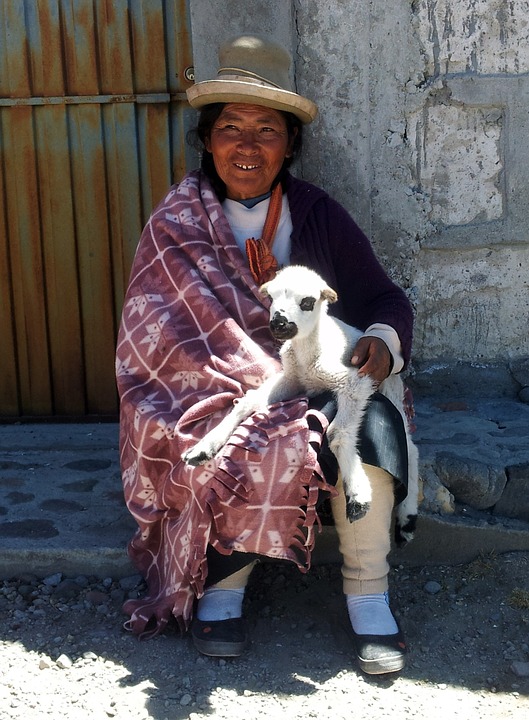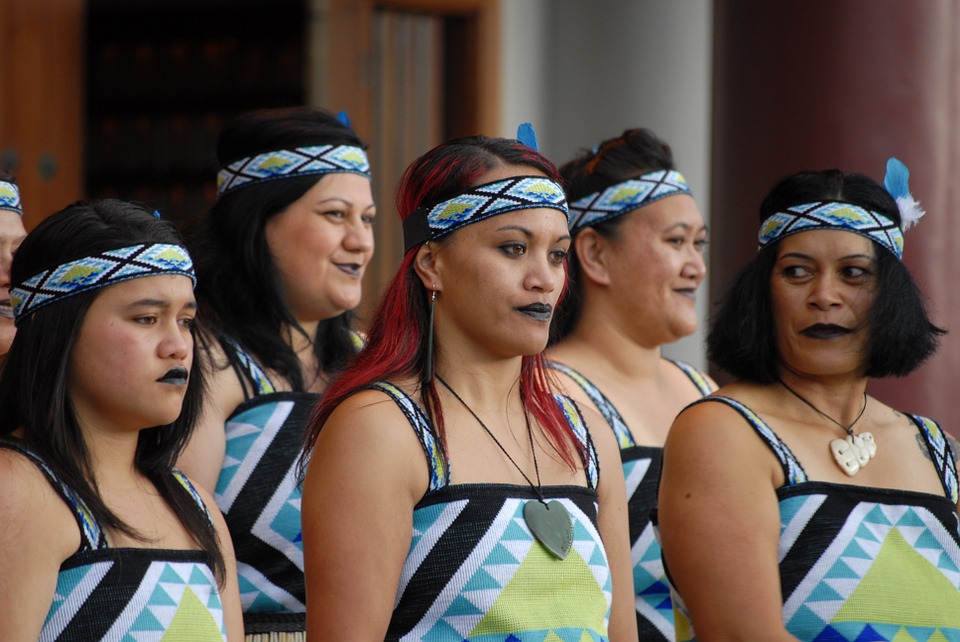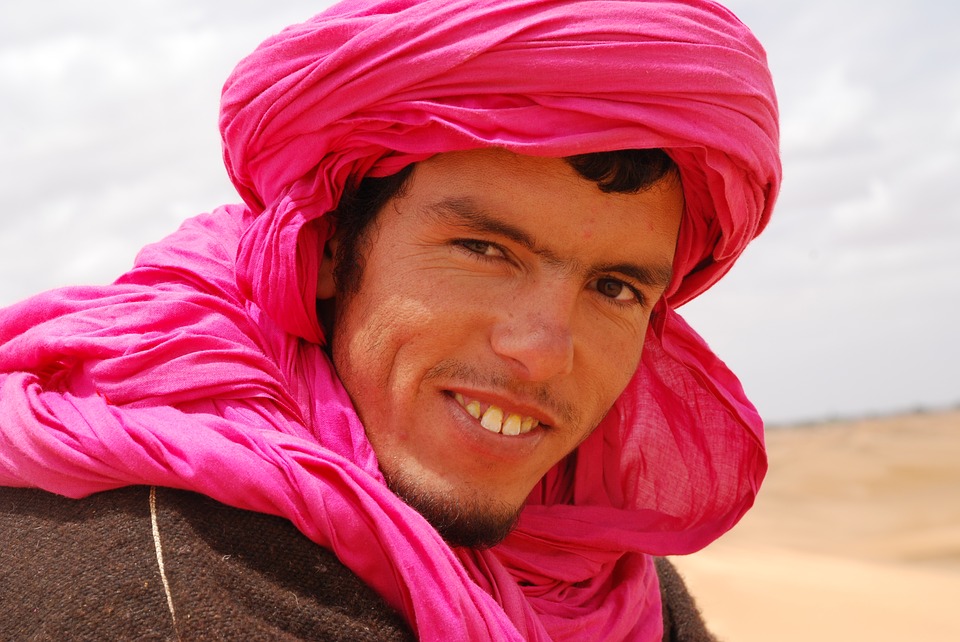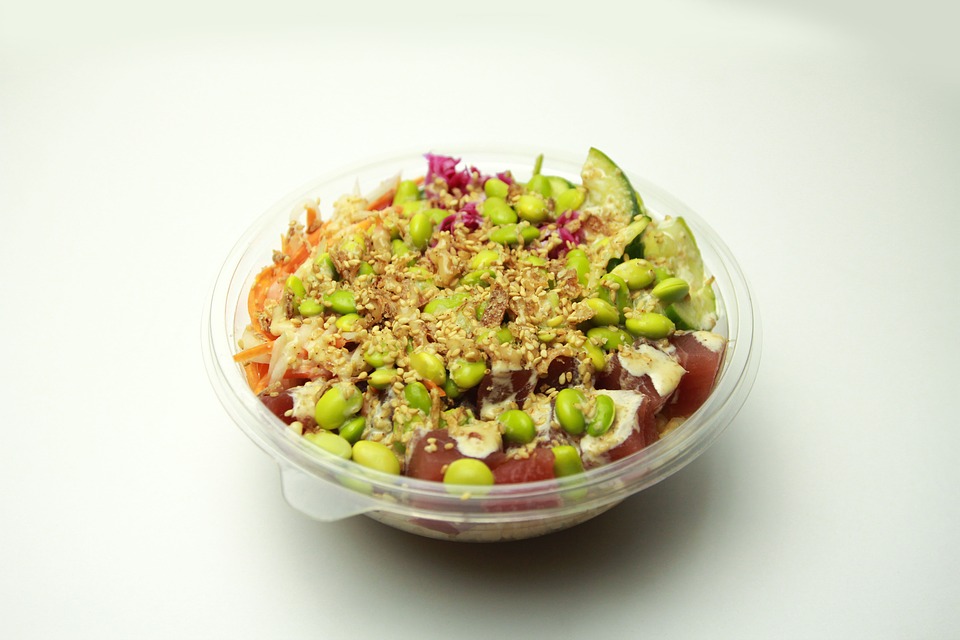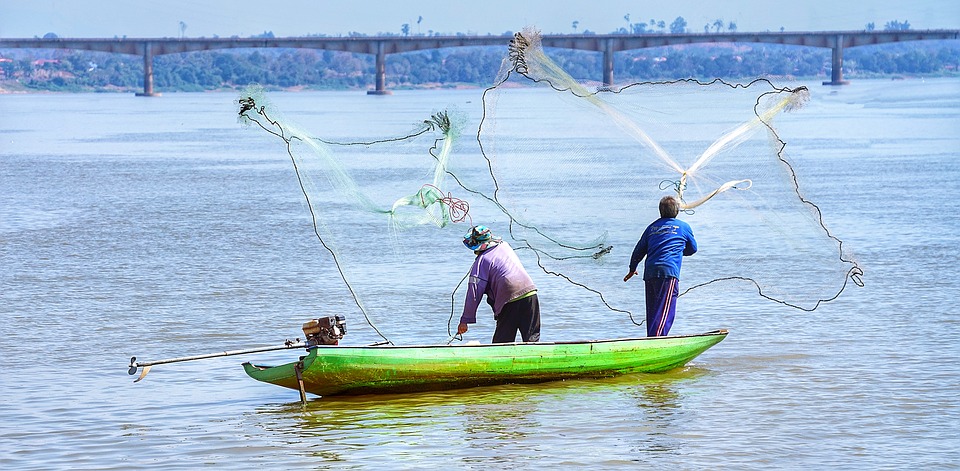Today, popular television shows featuring ethnographic culinary adventures bring food and film together for the enjoyment, entertainment, and enlightenment of foodies and anthropologists alike. While most of us do not have the opportunity to travel around the world and experience various food cultures, we have in recent years been presented with a new spin on “reality TV” – ethnographic forays into cultures and cuisines in which the narrator travels the globe to live among diverse groups of people, learning about their lifeways and historic culinary traditions, cooking and eating side-by-side with local experts, and sharing observations and reflections. This sounds a lot like classic ethnography as practiced by professional anthropologists, but the hosts of these television shows tend to be trained chefs, rather than social scientists. Nonetheless, the popularity of these shows attests to the enduring appeal of culinary adventure.
Parts Unknown: Anthony Bourdain
In recent years, the undisputed king of this television genre was the late Anthony Bourdain, whose hit shows Parts Unknown and No Reservations transported viewers to far-flung outposts all around the world. Among his legion of fans, Bourdain could count academic anthropologists who endorsed his ethnographic documentarian methodology. In his blog post How Anthony Bourdain Became an Anthropologist and Found His Soul, Professor Christopher Boehm of the University of Southern California describes Bourdain’s conversion from a place of cynicism about humanity and its vices to one of optimism about its virtues:
Bourdain’s point was that after spending months in remote parts of the world, talking to ordinary people about their lives and their food, he decided that ‘…the world is, in fact, filled with mostly good and decent people who are simply doing the best they can.’ (Boehm 2013).
After Bourdain’s untimely passing at age 61 in 2018, Professor Heather McIlvaine-Newsad of Western Illinois University paid tribute to Bourdain in her blog post Anthony Bourdain Would Have Loved This celebrating the second annual Farm2Fork Fundraiser Dinner held at the WIU campus:
Like most, I had never met Anthony Bourdain, yet he felt like a friend to me. From his very first foray into ethnographic filmmaking and eating around the globe with A Cook’s Tour to his more recent Parts Unknown, he kept me company on a regular basis…And while he wasn’t trained as an anthropologist, I counted him as one of my own, because he got it…Food is a cultural universal. We all need it to survive, but food is also much more than just nutrition. Bourdain’s ability to sit and enjoy a meal that had often been prepared in the most humble of circumstances with the most basic of ingredients was in and of itself a fundamental lesson of anthropology (McIlvaine-Newsad 2018).
Uncharted: Gordon Ramsay
Following in the tradition of food anthropology on television, the new series Uncharted features celebrity chef Gordon Ramsay, best known for his shows Hell’s Kitchen and Kitchen Nightmares. Ramsay, who is highly respected in the food business, has a reputation as a harsh critic – a consummate perfectionist with a no-holds-barred style of brutal honesty. Uncharted shows Ramsay in a kinder and gentler light – as an adventuresome traveler visiting cultures to learn about their culinary traditions, rather than impart his own professional expertise. This reversal of roles, with the instructor as the student, makes for compelling television. National Geographic provides a description of the show which summarizes its essence: “Chef Gordon Ramsay embarks on anthropology-through-cuisine expeditions to explore the people, places and flavors the world has to offer”.
The first season of the show features six episodes, each focused on a particular geographic region, and highlights each region’s cultural and culinary heritage through local cuisine. These cultures are also featured in a special promotion issue of National Geographic Magazine which includes cultural summaries, stunning photographs, recommended day trips, and delicious looking recipes. Here we will examine each of the six episodes of Uncharted to demonstrate how eHRAF World Cultures and eHRAF Archaeology can provide a richer and deeper understanding of the cultural traditions highlighted.
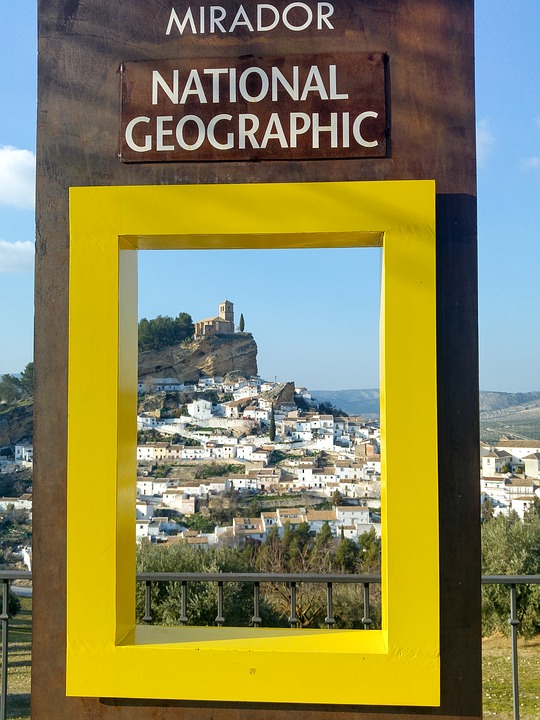
This viewpoint of Montefrio, Granada in Andalusia, Spain was selected as 1 of the 10 Best Views in the World by National Geographic in 2015.
EPISODE 1: PERU
In the first episode of Uncharted, Ramsay visits the Sacred Valley of Peru, 11,000-feet above sea level. This region was the heart of the Inca Empire more than 5,000 years ago: “While many things have changed, the altitude of this region and the biodiversity of its ecosystem have remained the same, allowing farmers today to follow in the ways of the Incas” (Robinson 2019a).
High-altitude foraging and agriculture are the main themes of this episode, and Ramsay discovers ancient subsistence methods dating back to the Inca Empire. Ramsay scales a towering cliff face in the Peruvian Andes in search of a rare herb and cooks in a huatia, an earthen oven. Ramsay also meets Manuel Choqque Bravo, a fourth generation potato farmer in the Andean highlands of Chincero, who studied agricultural engineering at the Universidad San Antonio Abad in Cusco. Robinson highlights the importance of potatoes in Peruvian history, culture, and cuisine:
More than 4,000 varieties of native potatoes grow in these highlands, and Andeans were the first people to cultivate them. ‘Mad potato scientist’ Manuel Choqque works on cross-pollinating high-altitude potato strains once used by the Incas. The most spectacular versions are deep purple and red on the inside, and their hue deepens with altitude, to protect them from the intense ultraviolet light at high elevations (Robinson 2019a).
In addition to cultivating colorful and delicious potatoes sought after by world-class chefs, Bravo is something of Andean microbrewer, using ingredients from the natural environment to make beer out of fermented corn known as Chicha de jora: “The first known usage of this drink was long ago during the government of Inca Tupac Yupanqui” (Robinson 2019b).
More in depth information about the cultural and archaeological heritage of Peru can be found in eHRAF World Cultures by browsing the culture collection Inka (SE13) or in eHRAF Archaeology by browsing the tradition Inka (SE80). The economic organization of the Inka State by John Victor Murra provides a description of potatoes as a major crop:
While potatoes, in their hundreds of varieties, were the main high-altitude crop, other tubers like oca, mashua, ulluco, were and are still widely grown. They can also be preserved in chuñu form by freezing and drying. Only one grain crop, quinoa, is usually associated with the puna tubers. Its grains and leaves were used for food and a drink. One of the varieties was archaeologically found in quite early strata (Murra 1980: 7).
EPISODE 2: NEW ZEALAND
In the second episode of Uncharted, Ramsay visits New Zealand, a land with a multicultural heritage drawing from Polynesian, Asian, and European influences. The indigenous Māori people were hunters and gatherers who harvested food from the ocean, rivers, mountains, and forests and “contemporary New Zealand cuisine also draws heavily on Māori food.”
The ancestors of the Māori people and their modern descendants have had a spiritual relationship with nature, especially the forest from which they foraged the ingredients for food and medicine. Robinson describes how the forest has been considered sacred by the Māori and how they have viewed their abundant natural resources as gifts from Mother Earth:
Medical practitioners passed their knowledge down through the generations, and modern Māori healers still use the concepts and practices they learned from their predecessors. Thoughtful foraging practice, whether for kai (food) or Rongoā Māori (herbal medicine), is to prioritize great respect for the forest, for the Māori people, the bush and the native plants are also ancestors. From pikopiko fern tips to wood ear fungus to heart-shaped kawakawa leaves, they’re all generous resources from Papatūānuku—the Mother Earth figure in Māori tradition (Robinson 2019b).
The indigenous inhabitants of New Zealand can be further studied by browsing the culture collection Maori (OZ04) in eHRAF World Cultures. In the New growth from old: the Whanau in the modern world, Joan Metge offers a broader analysis of the Mother Earth figure Papatūānuku which provides insights into Māori gender relations:
Respect for women is underpinned by reference to the sacred stories of the making of the world. Though a casual hearing or reading of these gives the impression that males are the central characters, the doers of deeds, deeper study reveals that females also play key roles, often as custodians of knowledge who advise, direct and protect the males. Women are identified metaphorically with Papatuanuku, the primal mother, sharing her status and functions as bearer, nurturer and protector of succeeding generations (Metge 1995: 95).
EPISODE 3: MOROCCO
The third episode of Uncharted focuses on the ancient traditions and food culture of the indigenous Amazigh (Berber) people in the Middle Atlas Mountains of Morocco. Local mushroom hunter Abdullah leads Ramsay into the forest on a foraging expedition to find a diverse selection of wild mushrooms:
Abdullah and his crew show Ramsay how to incorporate the basket of morel, porcini, and chanterelle mushrooms into medfouna, a stuffed bread they refer to as Berber pizza. The word medfouna means “buried,” referring to the delectable blend of ingredients and spices hidden within the bread crust. Cooked in the outdoors over a campfire, it seems an added luxury to incorporate these expensive mushrooms in everyday cuisine, but the forests of Morocco conceal a wide variety of edible, wild mushrooms (Robinson 2019c).
As Ramsay and his guides enjoy the delicious “Berber pizza” with its luxurious rare mushrooms, the chef proclaims, “That was one of the best pizzas I have ever eaten. Put a slice of that on my menu back home in London, you would have to charge in excess of one hundred pounds….The shock for me is that for the boys, it’s a staple, they eat it every day…Now, I want to be a Berber.”
More information about this rich cultural heritage can be found by browsing Berbers of Morocco (MX03) in eHRAF World Cultures. In the Tribes of the Riff by Carelton Coon there is section titled “Agriculture and the Gathering of Wild Plants” in which the author lists mushrooms – or iuasrin – among the items which are foraged by the indigenous people of Morocco:
There are certain wild products growing on mountains, in valleys, in springs, and on refuse heaps, which are of food value and are collected and eaten, either from choice or as emergency rations in time of famine, although no attempt is made to cultivate them (Coon 1931: 44).
EPISODE 4: HAWAII
Over the past few years, the Hawaiian dish known as “poke” has enjoyed a meteoric rise in popularity. The traditional dish in the islands of Hawaii relies on three main ingredients – cubed raw fish, seaweed, and chopped kukui nut (also known as candlenut) – with additional seasonings such as sea salt, sesame oil, chili pepper, and soy sauce added for flavor. Hawaiian poke has been described as “sushi in a bowl” or as a “sushi salad” and it has become as trendy as Japanese sushi. However, much like so-called “Hawaiian pizza” (the pineapple and ham topped pizza sensation invented by a Greek Canadian in 1962), the poke of today’s wildly popular mainland chain restaurants may be lacking in cultural authenticity.
In search of the “real deal” when it comes to Hawaii’s cultural and culinary heritage, the fourth episode of Uncharted journeys along the Hana Coast to discover how the people of the multicultural island blend local ingredients with diverse ethnic traditions to produce food worthy of aloha – the Hawaiian word for love, peace, and affection:
Representing far more than Spam and poke bowls, the cuisine of the Hawaiian Islands has relied on migrants to develop the taste of the culture. The migration that brought Polynesians and later groups to the archipelago has helped diversify Hawaiian cuisine…Modern Hawaiian cuisine blends flavors from the Pacific and beyond (Robinson 2019d).
Hawaiians (OV05) are a cultural group featured in eHRAF World Cultures. In her study of six urban Hawaiian households, Karen Ito interacted with household members and observed how ceremonies and prayers are practiced to restore the set of positive emotions associated with the word aloha, a central feature of Hawaiian culture which extends to all aspects of life, including food and hospitality:
Someone of aloha reaches out to others, is expansive and inclusive, a giver of largess and empathy…An often stated sign of someone who is “real Hawaiian-style” is one who immediately calls out to you as you approach the house saying, “Come! Come eat.”…Junie describes her brothers as being “Hawaiian-style” in their musical preference (popular, modern Hawaiian music), lifestyle (defined in terms of food: “you know, raw fish and poi and stuffs like that”), and hospitality (Ito 1999: 82).
EPISODE 5: LAOS
The fifth episode of Uncharted visits the country of Laos, a lesser-known travel destination compared with its more tourist-populated neighbors of Thailand, Cambodia, and Vietnam. Laotian cuisine is sometimes confused with Thai cuisine, but the different geographies have resulted in divergent food traditions. Laos is landlocked but a river runs through it – the Mekong River, known locally as “the river of life”, stretches through six countries and is one of the longest in the world. Khone Falls, where Ramsay and his Laotian hosts try cast-net fishing, is “considered the widest falls in the world…The great volume of the falls – 2,500,000 gallons per second, is nearly double the volume of Niagara Falls” (Robinson 2019e). While fish is a primary food source for Laotians, they cannot rely solely on the bounty of the Mekong River:
Laotians go to extreme lengths to source their ingredients. Food scarcity in areas where the Mekong River is less generous means that villagers need to seek out their protein resources beyond available river fish. The lush rice paddy fields yield smaller animals—frogs, snails, and ‘toebiters’ (giant water bugs)—and ant larvae from nests in the forest all contribute to the Laotian diet (Robinson 2019e)
Several cultures from Southeast Asia are covered in eHRAF World Cultures including Cambodians (AM04), Central Thai (AO07), Rmeet (AM28), and Vietnamese (AM11). Among the documents pertaining to the cultures of this region is “Rice and Man: agricultural ecology in Southeast Asia” by the late Lucien Hanks, who taught anthropology at Bennington College. Hanks describes the pattern of “shifting cultivation” for Southeast Asian cultures whose main sources of food are fishing and rice and who have a semi-nomadic lifeway lacking in permanent settlement:
There are ‘partial’ shifting cultivators whose main mode of support is fishing or even raising irrigated rice…The Lahu Nyi uplanders of Thailand, Burma, and Laos move their houses every few years to be nearer their fields. Their unconcern for permanency shows in a simple style of house-building, the absence of plan in village settlement, and vague claims of territory in the surroundings (Hanks 1972: 32).
EPISODE 6: ALASKA
The icy panhandle of Southeast Alaska is the setting for the sixth episode of Uncharted, concluding its first season on National Geographic. With its cold, bleak winters this is a region where local cultures have adapted to their harsh environment in order to survive and thrive. The indigenous people of this region known as the Tlingit have faced challenges of their remote terrain and rough climate to find innovative ways for sourcing and preparing food.
Spruce trees at the top of Chimney Rock provide a source of ingredients for Alaskan cuisine. Spruce tips are used in everything from salads to stews, are rich in vitamin C, and contain carotenoids, potassium, and magnesium. Lichen from the same trees, known as “old man’s beard”, is used for making tea with antifungal, and antimicrobial properties:
There’s a small window to pick the fresh shoots in spring, and those that aren’t used immediately can be kept in the freezer for later use. An essential element of foraging spruce tips for Alaska Native cultures is to harvest respectfully, which means thanking the tree for giving up some of its tips and always harvesting in moderation (Robinson 2019f).
Thanking the tree and harvesting in moderation are part of a native Alaskan spiritual tradition with a deep respect for nature. This tradition combines animism with anthropomorphism in the philosophy and religion of the Tlingit. The spiritual dimensions of this native Alaskan culture can be explored in eHRAF World Cultures by searching for Tlingit (NA12). Here is a description of Tlingit spiritualism from “The Tlingit Indians”:
The Tlingit endowed all nature with spirit life…Natural phenomena and inanimate objects all possessed something which made itself felt or became visible under certain conditions. The wind, whirlpool, thunder and lightning, or a glacier, were controlled by spirits. The spirit of a tree was the shadow made visible by sunshine…All living creatures have spirits. It will be remembered that the spirit of the tree cut for a house post or canoe had to be propitiated, as did the nearby trees that might be injured in the felling (Emmons and De Laguna 1991: xxxiv).
Explore More
Teaching eHRAF has resources related to the topic of food and subsistence, including our in-class activity Bizarre Foods and our short paper assignment Ecological Function of a Behavioral Institution in a Nomadic Society. We also regularly cover the topic of food on our homepage, such as in our popular posts, The Social Life of Cheese and A Divine Brew: Alcohol in Haitian Vodou and Yucatec Maya Ritual.
If the topic of food anthropology has whet your appetite and your university or college has an eHRAF membership, you may explore global culinary traditions from a cross-cultural perspective by searching for these subjects in eHRAF World Cultures and eHRAF Archaeology:
- Diet (262)
- Eating (264)
- Food consumption (260)
- Food processing (250)
- Food quest (220)
References
Boehm, Christopher. April 28, 2013. “How Anthony Bourdain Became an Anthropologist and Found His Soul.” Culture World 21-C. http://cultureworld21c.blogspot.com/2013/04/how-anthony-bourdain-became.html
Coon, Carleton Stevens. 1931. “Tribes of the Rif.” Harvard African Studies. Cambridge, MA: Peabody Museum of Harvard University. https://ehrafworldcultures.yale.edu/document?id=mx03-001.
Emmons, George Thornton., and Frederica De Laguna. 1991. “Tlingit Indians.” Anthropological Papers of The American Museum Of Natural History. Seattle: University of Washington Press ; American Museum of Natural History. https://ehrafworldcultures.yale.edu/document?id=na12-031.
Hanks, Lucien Mason. 1972. “Rice and Man: Agricultural Ecology in Southeast Asia.” Worlds of Man. Chicago, Ill.: Aldine Atherton. https://ehrafworldcultures.yale.edu/document?id=ao07-036.
Ito, Karen Lee. 1999. “Lady Friends: Hawaiian ways and the ties that define.” Anthropology of Contemporary Issues. Ithaca, NY: Cornell University Press. https://ehrafworldcultures.yale.edu/document?id=ov05-008.
Judkis, Mauria. June 27, 2017. “Hawaiian poke has never been trendier. But the mainland is ruining it.” The Washington Post. https://www.washingtonpost.com/goingoutguide/the-poke-bowls-swarming-dc-are-tasty-but-dont-call-them-authentic-hawaiian-food/2017/07/26/8de42e6c-6bf3-11e7-96ab-5f38140b38cc_story.html
Judkis, Mauria. August 23, 2018. “Poke’s popularity surges even as arguments about authenticity heat up.” The Washington Post. https://www.washingtonpost.com/news/voraciously/wp/2018/08/23/pokes-popularity-surges-even-as-arguments-about-authenticity-heat-up/
McIlvaine-Newsad, Heather. September 5, 2018. “Anthony Bourdain Would Have Loved This.” Tri States Public Radio. https://www.tspr.org/post/anthony-bourdain-would-have-loved
Metge, Joan. 1995. “New Growth From Old: The Whanau In The Modern World.” Wellington, N.Z.: Victoria University Press. https://ehrafworldcultures.yale.edu/document?id=oz04-011.
Murra, John V. 1980. “Economic Organization of The Inka State.” Research in Economic Anthropology. Greenwich, Conn.: JAI Press. https://ehrafarchaeology.yale.edu/document?id=se80-017.
Robinson, Jill K. 2019a. “Gordon Ramsay Adventures in Peru’s Sacred Valley.” National Geographic. https://www.nationalgeographic.com/shows/gordon-ramsay-uncharted/gordon-ramsay-peru-cooking/
Robinson, Jill K. 2019b. “Gordon Ramsay Explores New Zealand’s Rugged South.” National Geographic. https://www.nationalgeographic.com/shows/gordon-ramsay-uncharted/gordon-ramsay-new-zealand-cooking/
Robinson, Jill K. 2019c. “Gordon Ramsay Treks the Mountains of Morocco.” National Geographic. https://www.nationalgeographic.com/shows/gordon-ramsay-uncharted/gordon-ramsay-morocco-cooking/
Robinson, Jill K. 2019d. “Gordon Ramsay Journeys Along Hawaii’s Hana Coast.” National Geographic. https://www.nationalgeographic.com/shows/gordon-ramsay-uncharted/gordon-ramsay-hawaii-cooking/
Robinson, Jill K. 2019e. “Gordon Ramsay Travels the Mighty Mekong of Laos.” National Geographic. https://www.nationalgeographic.com/shows/gordon-ramsay-uncharted/gordon-ramsay-laos-cooking/
Robinson, Jill K. 2019f. “Gordon Ramsay Braves the Icy Alaska Panhandle.” National Geographic. https://www.nationalgeographic.com/shows/gordon-ramsay-uncharted/gordon-ramsay-alaska-cooking/
